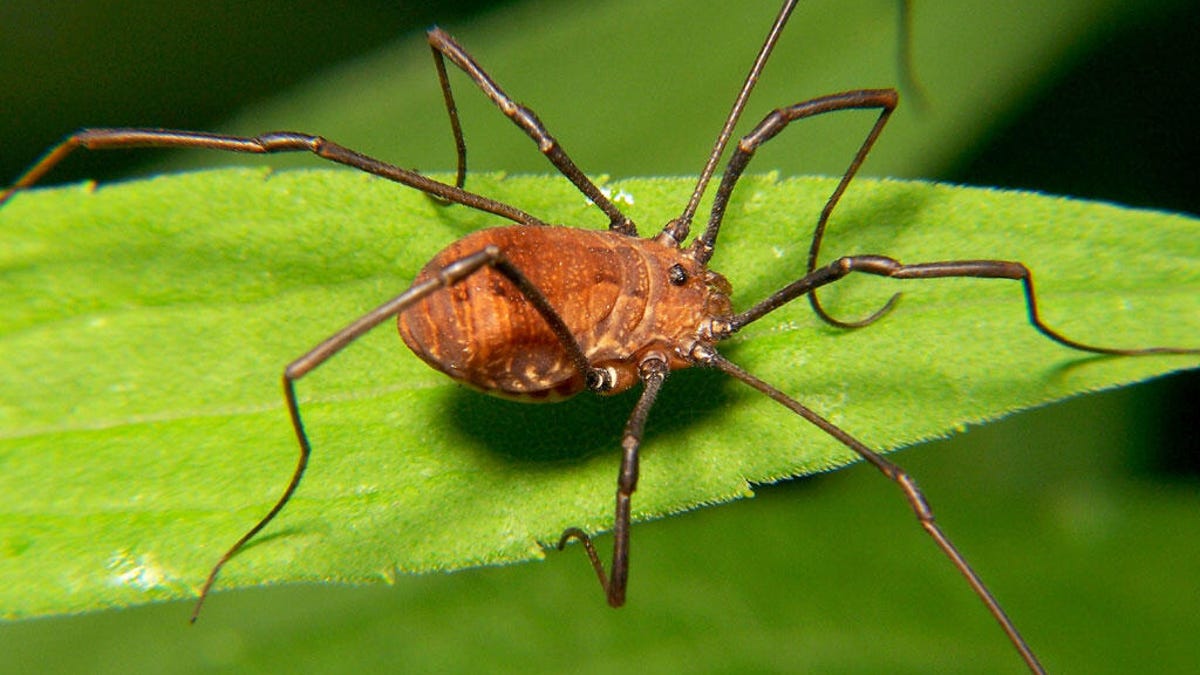Scientists tweak daddy long legs genes to make daddy short legs
Genetically engineering the leggy spiders could help unlock the secrets of how they develop such long gams in the first place.

Daddy in action.
To some they're charming, to others they're creepy. Regardless of your feelings about the daddy long legs spider, odds are good you've seen the ubiquitous arachnid cruising up a wall or over its silky web. (And no, it's most certainly not capable of killing you.)
Now scientists have done something with one species of the house-dwelling spider you've certainly never seen before. They've created "daddy short legs" specimens by tweaking the creatures' genes.
Researchers led by Guilherme Gainett from the University of Wisconsin-Madison first sequenced the genome of Phalangium opilio (technically not a spider but a close relative), thought to be among the most widespread of more than 6,000 different species of daddy long legs -- also known as harvestmen -- documented worldwide.
Next, the scientists used a technique called RNA interference to basically turn off, or "knock down," a pair of genes associated with leg development in hundreds of daddy long legs embryos. The result was that six of the animals' eight legs were about half the size of their normal, un-engineered counterparts.
The legs seemed to be transformed into a different kind of appendage, known as a pedipalp, which is used in handling food.
"The genome of the daddy long legs holds great potential to clarify the complex history of arachnid genome evolution and body plan, as well as to reveal how daddy long legs make their unique long legs," Gainett said.
The study is published in the latest issue of the journal Proceedings of the Royal Society B. The research team hopes the work will facilitate the development of more sophisticated tools for functional genetics.
"Looking forward, we are interested in understanding how genes give rise to novel features of arachnids, such as spider fangs and scorpion pinchers, and also leveraging the genome to develop the first transgenic harvestmen," Gainett added.
As of now, there aren't any plans to genetically engineer a species of daddy long legs that actually is as poisonous as the old urban myth contends. That sequel to Arachnophobia will have to wait.

